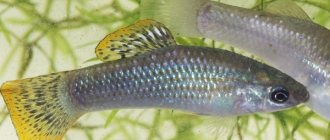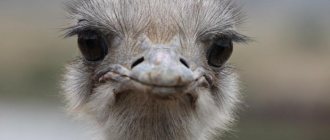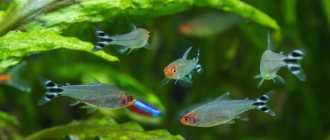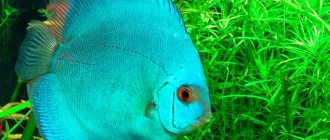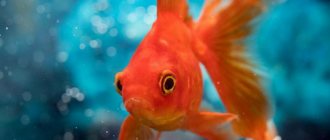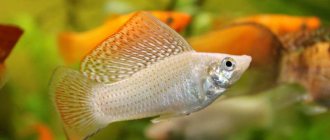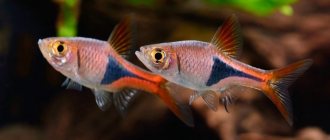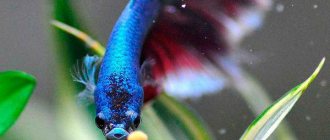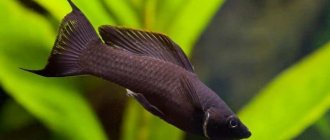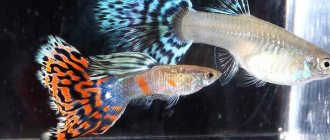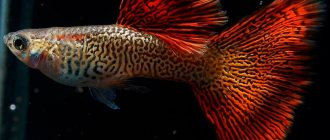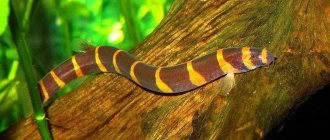The inhabitants of the underwater world are fabulously beautiful and diverse, but sometimes the most amazing aquarium fish are the work of man, not nature. Among the representatives of the goldfish family there is a breed bred by breeders - unusual and fascinating telescope fish. Attractive appearance and abundance of colors are what made telescope fish so popular among aquarists, but they are not so easy to keep. Before you decide to get a big-eyed pet, you should find out how many and what telescopes require for healthy development and long life.
Origin and description
The aquarium telescope fish has a bright appearance - representatives of this species have voluminous, bulging large eyes, making the fish easy to distinguish from other inhabitants of the underwater world. In fact, the expressive eyes of telescope fish are a deviation that people liked so much that they decided to perpetuate this pathology by breeding fish with bulging eyes. This sad and touching fish does not live in the wild.
The history of telescopes began in China, and after a long time, strange fish came to France, and then to Russia, where, through the efforts of breeders, new species of fish were formed. Small size, expressive eyes, bright color - the telescope fish looks touching and whimsical, which is why aquarists fell in love with it from the first moments.
Description of appearance:
- Large head, mouth directed slightly downwards.
- The body is short, the belly is rounded.
- The eyes are large, bulging, the gaze is directed forward and in different directions.
- The size of the scales is average; some varieties have no scales.
- The caudal fin is forked.
The size of telescopes depends on the conditions of detention. Typically, the length of fish does not exceed 12 cm, however, cases have been recorded when pets reached 20 cm. With proper care and proper maintenance of telescopes, aquarium fish can live 15-20 years.
History of appearance
In the 15th century, the Chinese actively worked with wild crucian carp, trying to obtain original species of fish.
At the beginning of the 16th century, they developed a telescope and called it the “dragon's eye.” Japanese ichthyologists were actively involved in further .
In 1872, several telescopes were brought to Europe. They came to the famous Pierre Carbonnier, a French naturalist who made a significant contribution to the popularization of aquarium keeping.
In turn, Pierre Carbonnier gave two females of the “dragon eye” to the Russian scientist Meshchersky.
Russian breeders have contributed to the increase in varieties of unusual fish. They created the “Moscow black telescope” and the black telescope with ruby eyes .
Varieties
Thanks to the efforts of collectors, telescopes are not limited to a single color. Fish are divided into varieties according to color, shape of fins and scales, among which the following representatives are popular:
- Telescope panda - the fish received its original name because of its characteristic black and white color.
- Calico telescope – the color of the fish is light with a bluish tint. The body is decorated with spots of different colors: pink, dark, blue, yellow.
- Black telescope - representatives are painted in a noble dark tone. Black fish have elongated lateral and caudal fins.
- Orange – the name of the fish reflects the color. This variety has a bright orange body, the intensity of which can vary.
- Red Chinese - stands out for its lack of scales and red tones in color.
In addition to colors, fish are classified according to the shape of their fins: there are ribbon, skirt and veil telescopes.
Interesting fact: the color of the fish can change depending on the diet, the color of the substrate and the conditions of detention.
Popular types
You can recognize a “little dragon” of any kind in a photo by its eyes - they are simply huge. The shape of the eyes can be spherical, conical or cylindrical .
The short, rounded body is crowned by a large head, and on the other side is a gorgeous tail, hanging in an amazing veil or soft triangle. His fins are the same veil.
Usually the length of the fish is 10 cm, but with good care they can grow up to 25 cm . How long does a telescope last? The average life expectancy is 15 years , but there are also individuals that live up to 20 years.
The species created by breeders are distinguished by 3 main characteristics:
- Shape and size of fins (skirt, short-fin, ribbon).
- The presence of scales, that is, fish can be scaly or scaleless, with a velvety body;
- Color - monochromatic and multi-colored, the most common being gold, black and red.
gold fish
Although the goldfish is a close relative of the telescope, it looks more sophisticated. It gives the gold telescope a beautiful metallic sheen and a bright orange color.
Panda
A variety of the “butterfly” breed with a velvety body. Its body is light, and its fins change color: initially in young individuals they are brown-bronze, then they become white or black.
Black Moor
The black color of the telescope is one of the most popular among aquarists. The black moor has a small tail and long side fins.
Calico butterfly
The calico butterfly has a white body that gives a blue tint. The chintz pattern is created by numerous spots, which can be black, yellow, white, red.
Rare colors include calico prints with bluish, pink and blue splashes.
Content
The maintenance and care of telescopic fish requires concentration and responsibility from the aquarist, since due to their special structure, pets are often injured. First of all, fish will need a spacious and comfortable home - for 4 telescopes, the tank capacity should be at least 300 liters. Water parameters are as follows:
- Temperature – 20-23C.
- Hardness – 8-25 dH.
- Acidity – 6-8 pH.
In an aquarium where telescopes live, it is important to avoid sudden jumps and temperature changes. Equipment you will need is a high-quality filter and aeration. The water is changed weekly, updating ¼ of the volume.
Considering the gentle eyes of the fish, the owner is required to arrange the following arrangement of the reservoir:
- Lighting – set to intense, since telescopes love bright light.
- Soil - choose a mild, medium or coarse fraction. Telescopes love to dig into the substrate, so they can get hurt or choke.
- Vegetation – unpretentious species of flora with rapid growth and strong roots are planted in the aquarium. Pets will happily eat tender plants and dig up the roots, but hard-leaved flowers can hurt the eyes of fish.
- Decoration – it is better to avoid decorations, shelters and grottoes. Despite the efforts of breeders, telescopes do not have excellent health and vision, so the decorations prevent the fish from swimming and can cause the development of illness or injury.
Features and difficulties of aquarium keeping
Experienced experts recommend observing the following parameters.
Water
Replace 20% of the water every week. Telescopes prefer lower fluid temperatures than goldfish. Suitable: +18…+23 °C, permissible hardness 5-19 °dH, acidity pH 5.0-8.0.
Aquarium
Dragon fish need a specific, classic container. They recommend a rectangular shape, with a large surface of water for stable gas exchange.
For a pair of individuals, a volume of 80-100 liters is needed. When planting Demenkin, they add 50 liters. A round aquarium impairs vision and slows down the growth of fish.
Visually impaired Telescopes, when picking up food, actively dig sand and pebbles, but cannot eat everything. Therefore, a powerful external filter is used for filtration, passing water through a “flute” - a tube with holes, reducing the flow.
Priming
The bottom of the aquarium is covered with coarse sand and pebbles. Telescopes, in search of food, swallow its particles, spit out small ones, but choke on large ones. This can cause the death of the individual. The choked fish is wrapped in cloth and the pebble is removed with tweezers.
landscaping
Large-leaved plants with strong roots are planted: egg capsule, vallisneria, sagittaria, elodea. The leaves should be soft, without cutting edges, so as not to damage the Demenkins' eyes.
Compatibility
When selecting neighbors for the Telescope, take into account its excellent appetite, slowness and susceptibility to injury. Keeping with active or aggressive fish is strictly prohibited:
- cichlids;
- Siamese cockerels;
- swordtails;
- gourami;
- piranhas;
- arowanas;
- thorns;
- tetragonopterus;
- Barabus: Sumatran and Denison.
Piranhas, cichlids, and arowanas will dine on Demenkins. Swordtails and Siamese cockerels injure their eyes and tear off their fins. The suction pets use the dragon fish as a means of transport, causing injury to them and damaging their scales.
The Leisurely Telescope is a gregarious animal. A good option is a family of 4-6 short-bodied varieties of Demenkin, for example, Ranchu, Lionhead, Oranda, Ryukin. In a spacious aquarium with powerful filtration, you can add speckled catfish, zebrafish, and thornets.
The blind Demenkins are voracious, so juveniles and small fish risk becoming their dinner.
Feeding
The telescope's diet should be varied and include live, dry food and plant foods. Occasionally you can pamper your pets with pieces of strawberries, chopped pumpkin and zucchini, and salad. The telescope should be fed 2 times a day, while respecting the portion size - the fish are gluttonous, and often suffer from obesity due to overfeeding. Once a week, pets are given a fasting day.
The history of the origin of the bug-eyed fish
Asian countries are considered the homeland of these unusual fish. They came to Europe relatively recently - at the end of the 19th century. There they quickly became popular as pets. Several individuals were brought to Russia, where domestic breeders created by crossing a completely new species - a fish with large beady eyes, which is now popular all over the world. The classic breed of such “telescopes” is considered to be black, but there are also a number of breeds that were irretrievably lost:
- pure white fish;
- white and red veil fish;
- colorful fish without scales with veil or regular fins.
Veil fins look like long, thin and delicate transparent fabrics that flutter smoothly when moving in the water.
The classic breed of such “telescopes” is considered to be black.
Reproduction
Breeding telescopes is possible after the pets are two years old. Sexual dimorphism in the telescope is weakly expressed, so it is possible to recognize the sex of fish only during the spawning period, and even then with difficulty. Typically, reproduction occurs in the spring, so the owner should prepare a spawning tank in advance - a tank with a capacity of 30 liters. The bottom of the spawning tank is lined with sandy substrate, and vegetation with small leaves is planted. The optimal water temperature for producing offspring is 24-26C, acidity is 6-7.5 pH.
Before spawning begins, one male and 2-3 females are placed in the container, and then reproduction is stimulated by increasing the temperature by 5-10 degrees. After the female lays eggs, the parents are removed from the aquarium to preserve future fry.
After 2 days, larvae form in the spawning tank; after another 5 days, instead of eggs, fry swim in the tank. The babies are fed live dust and rotifers, gradually accustoming the fry to an adult diet. As the young grow older, they are sorted to avoid death and injury.
Breeding
Readiness for reproduction occurs in telescopes at the age of 2 years. The mating season occurs in spring.
Somewhere in March–April, you can notice how the behavior of pets changes : they become more active and show interest in the opposite sex.
Males and females of the telescope
It is impossible to distinguish a female “dragon eye” from a male until the breeding process.
When fish prepare for mating, the female's abdomen noticeably rounds, and the male develops tubercles on the gill plates .
How to organize the process
If you keep several males and females, they will certainly split into pairs.
For successful mating, it is necessary to separate females and males separately for 1.5–2 weeks, providing them with plenty of food .
As the day chosen for mating approaches, the fish are stopped feeding for a day. Then the established pair is transferred to a separate tank, where they will begin spawning.
The spawning tank for telescopes should be wide and low, its volume should be at least 50 liters . A separator mesh and Java moss are placed on the bottom.
The water temperature is kept around 24 °C. Having planted a couple in a spawning tank, you need to provide them with bright light and strong aeration .
Attention! Be sure to keep an eye on the spawning telescopes: once the female has spawned all her eggs, remove both parents to prevent them from eating their own offspring.
Dragon eye fry hatch after 7–10 days. This time is required for the maturation of eggs and the development of larvae.
Don’t worry if you don’t see bulging eyes in the babies—the fish will develop them over time. The juveniles are fed crustaceans.
Diseases
Telescopes have fragile health and are often susceptible to illness and injury, so pets need constant supervision. The most common ailments are:
- Infections of a bacterial nature - when affected, pets become covered with a white mucous coating, the fish itch against the walls, plants and stones. Treatment is performed by completely replacing the fluid in the reservoir.
- Fungus - if the telescope is lying on the bottom, and white threads have formed on the body, then the fish have been infected by a fungus. This is a dangerous disease, the main symptom of which is considered to be light-colored formations on the body, apathy, and refusal to eat.
- Oxygen starvation - this disease can be recognized by the behavior of pets. The telescope, short of air, rises to the top of the aquarium to breathe oxygen. To improve the situation, increase the operation of the aerator and clean the soil.
- Inflammation of the bladder - if the fish cannot seem to stay in one position, turns over or lies on the bottom, the reason lies in inflammation of the swim bladder. For treatment, you should consult an expert.
Telescopes are fragile and delicate fish with expressive eyes that are the creation of human hands. Having acquired sad pets, you should devote a lot of time to caring for and maintaining the fish, otherwise the telescopic fish may get sick and die.
Who does he get along with?
When choosing friendly neighbors, you should pay attention to peace-loving and phlegmatic fish breeds. Aggressive or overly nimble neighbors are not suitable for telescopes as roommates. They will gnaw and injure the bug-eyed fish, and take away its food. The telescope fish gets along perfectly with representatives of its species, goldfish, veiltails, orandas and shubunkins.
Stargazer fish do not tolerate loneliness well; it is better to keep them in small schools or place them with non-aggressive fish of other species.
You should not add ternets, barbs, piranhas, or tetragonopterus to them.
Yandex picture
How long does a telescope fish live in an aquarium?
Telescopes, like all decorative representatives of the carp family, are among the long-livers of the aquatic world. Their average life expectancy is 10 – 20 years. However, it is worth noting that this statement is only true for fish living in comfortable conditions. Poor care, dirty water and improper feeding reduce lifespan to 5 years.
Sources
- https://animaljournal.ru/article/ribka_teleskop
- https://MrHvost.com/ryba-teleskop
- https://AkvaOK.ru/presnovodnye/rybki/teleskop.html
- https://vplate.ru/akvariumnye-rybki/vidy/teleskop/
- https://RybkiVBanke.ru/akvariumnye-rybki/teleskop
- https://zverki.click/akvarium/rybki/akvariumnaya-ryba-teleskop-soderzhanie-i-uhod.html
[collapse]
